How To Remove Mold From Stone Shower
Shower Mold Growth - Identification & Solutions

Mold issues in the shower surround can be broken into two broad categories – surface mold growth and mold behind the surround. Surface mold growth is cruddy and tin be difficult to remove. Even so, it's the moisture hidden in the framing behind the shower that can lead to structural damage and expensive repairs.
Black mold growth on the surface of a shower surround
Depending on the type of materials used, mold growth can occur within the rock / tile itself. The photos below show heavy mold growth in travertine tile, which is very porous. Unless it is properly sealed, the moisture can penetrate the stone, creating conditions conducive to bathroom mold growth.
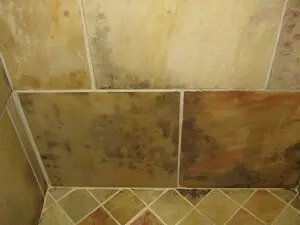
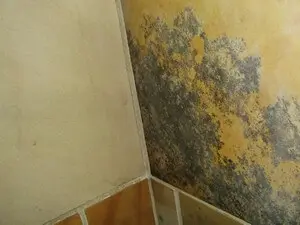
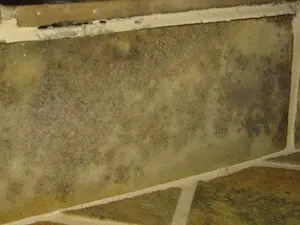
Mold growth on caulking
Shower caulking must endure heavy moisture conditions on a daily footing. It'south non surprising this is ane of the most common areas of mold growth within a home. This growth often occurs inside the caulking itself, which is why it is difficult to make clean. Replacing the caulking is usually necessary. The best long term solution? Use the highest quality caulking yous can find. The best products are formulated to withstand years of moisture saturation without developing mold growth.
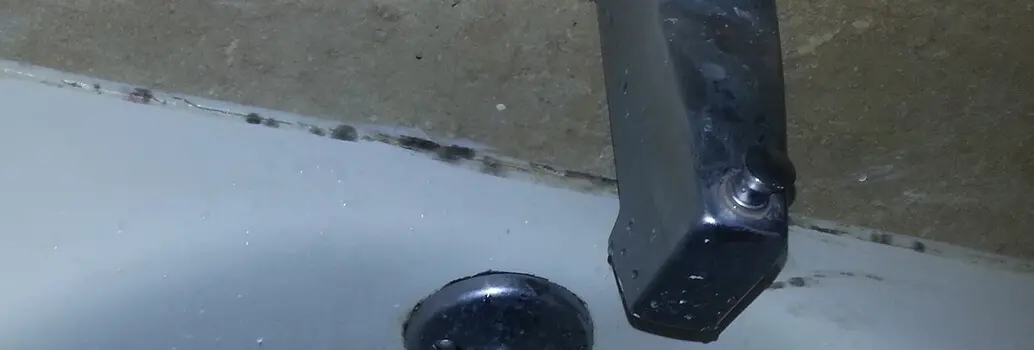
Mold growth on grout
Mold growth can occur within the grout used in the spaces between the tiles. Like mold growth in the caulking, this is very difficult to make clean. In its natural state, grout is highly porous and will absorb plenty moisture to propagate mold growth. Preventing this growth requires a high quality grout sealant (and periodic maintenance). In the paradigm below the grout has failed entirely in sections, assuasive moisture to penetrate backside the tile.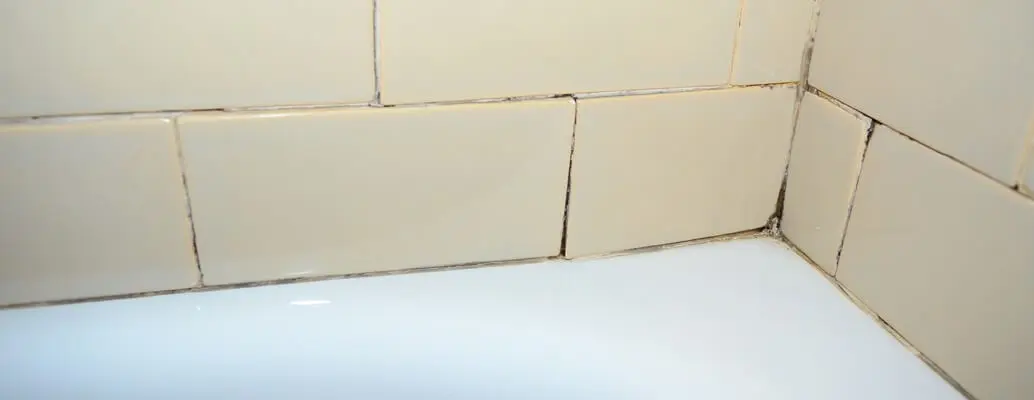
Mold impairment behind the shower environment
Surface mold growth is annoying, but rarely more than than an aesthetic nuisance. However, if enough wet has penetrated the wall crenel backside the shower environment, structural damage can occur. Three causes are possible.
- Leaky cold & hot water supply lines.
- Cracked tile & grout.
- Vapor drive
Failed shower tile
A failure of the shower surroundings will impact the backer board first. Often the outset indication of the trouble is a loose tile. This occurs when the backer board swells or loses information technology structural integrity, causing the glue/mastic to fail.
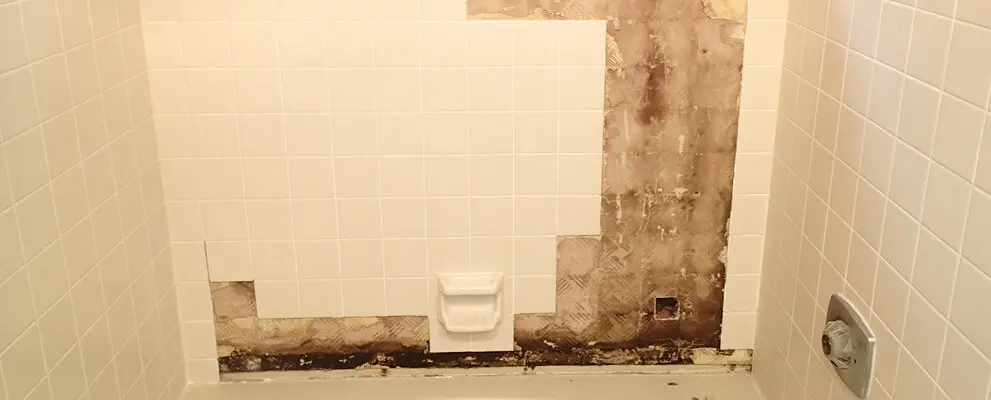
Mold Damage Backside Failed Shower Tile
The moisture doesn't e'er penetrate the underlying framing. In the right mitt photo the moisture meter shows elevated h2o content in the backer board. In the left manus photo, the underlying stud is dry out and structurally sound.
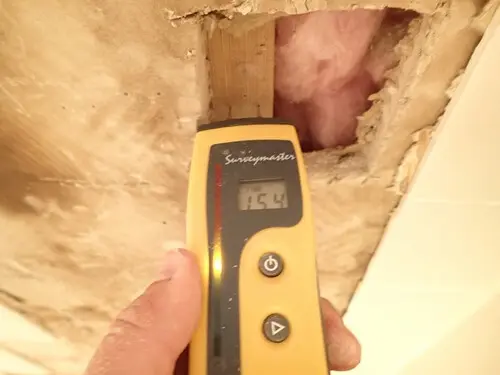
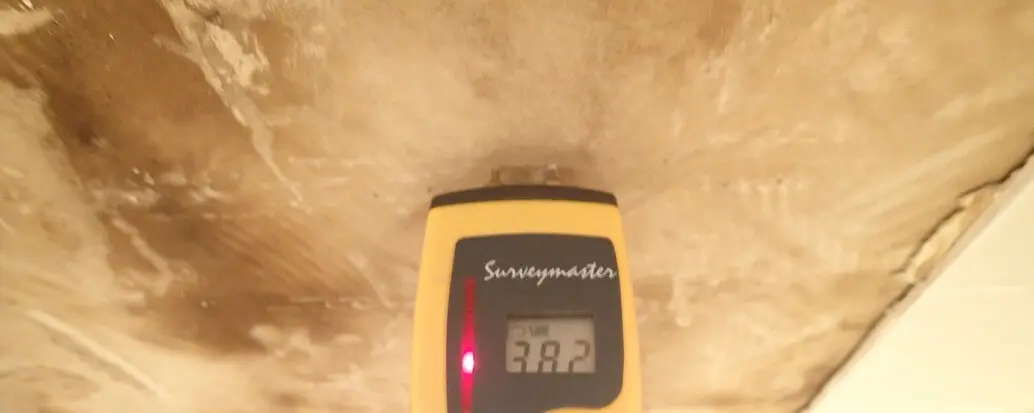
Diagnosing hidden mold and rot behind shower surrounds
Assessing a shower for hidden mold is difficult. Moisture meters, the most important tool in a mold inspectors kit, is of limited value on shower surrounds. Tile and stone ofttimes provide imitation positives due to the conductivity of the fabric. Fortunately, well trained mold inspectors have other avenues to identify wet problems.
- Investigate the crawlspace or room below. If the leak is significant, often the materials below the shower volition show signs of h2o damage.
- Investigate the adjacent wall. If the shower shares a common wall with a bedroom or closet, an inspector tin use a moisture meter to check for elevated water content. Additionally, a minor pigsty can be cut in the sheetrock to provide a visual inspection. A boroscope tin can then be used to expect within the wall cavity. This type of inspection is much less invasive than removing tile and can often be performed without drywall repair.
Below is a before and after shot of a tile shower. Note the extensive damage to the joists. Very little was keeping this shower from falling into the crawlspace beneath. The damage was fundamentally due to insufficient waterproofing behind the tile. The grout and caulking failed (equally information technology eventually does in all cases), allowing water to pass into the capitalist board. In a correctly designed shower, this capitalist board is coated with a thick waterproof coating. This is not only a backup in case the grout fails. It should be thought of as the master water barrier. In fact, skilled tile contractors volition fill the shower pan with water prior to installing the tile to show the efficacy of the waterproofing.
Shower during original inspection
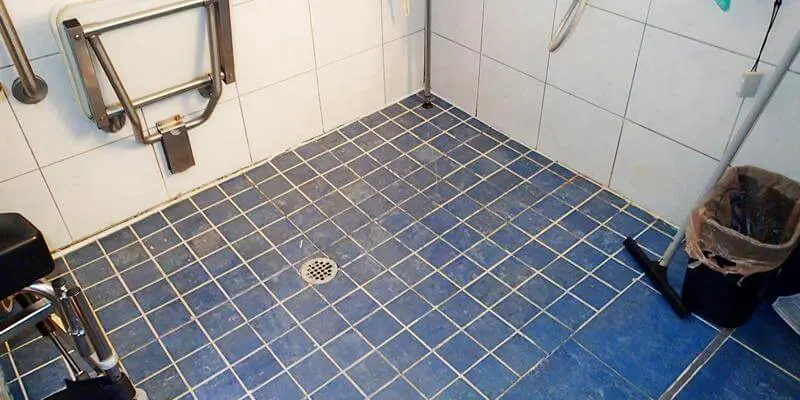
Shower with suspected water harm.
Mold & rot visible afterwards removing shower tile and pan.
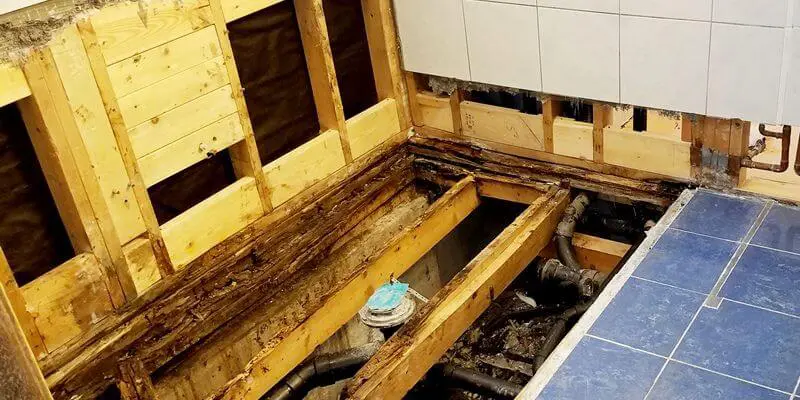
Clean up and remediation
Unless the problem is very small, mold problems in the shower wall should be addressed by a certified mold professional. The post-obit are steps an experienced mold contractor will follow:
- Setup containment. (HEPA air scrubber, negative pressure, etc.)
- Remove shower surround.
- Remove tile capitalist board if present.
- If necessary, remove tub or shower pan.
- Clean underlying framing and flooring.
- If dry rot is present, remove and replace damaged framing.
- Address plumbing problem.
Is shower mold a wellness problem?
If the mold growth is occurring inside the wall crenel (backside the shower surround), health problems are unlikely. Because the shower environment acts equally an air barrier, the mold spores cannot migrate to the indoor surroundings. All the same, if the shower mold is removed without professional containment in identify, the indoor air quality will undoubtedly go compromised.
What blazon of surrounds are most conducive to shower mold?
Shower surrounds vary wildly in the tendency toward failure. Unfortunately, the designs and materials often considered well-nigh aesthetically desirable are also the most likely to neglect.
- Rock tile.Stone surrounds, while beautiful, conduct all the problems associated with grout and caulking and accept the additional challenge of mold growth inside the rock itself.
- Porcelain Tile. Porcelain tile is much less porous and will rarely propagate mold growth itself. The principal challenges are the potential failure of the grout and caulking.
- three-piece fiberglass surroundings. Failure points are limited to the caulking at the seams.
- 1 piece fiberglass surround. Well-nigh bulletproof, a 1-slice surround provides very few failure points. Wet can leak through the door, but this is usually an installation failure.
Project Study > Shower Door Failure

General Data
- The home had been subject to a long-term leak around the shower door in the master bathroom.
- The new tenants are concerned about mold growth and a possible upshot on indoor air quality.

Main Bath:
- The principal bath is partially carpeted (this status is conducive to mold and mildew growth due to normal loftier-humidity conditions in the bath)
- Increased moisture content and stained grout noted in several square feet of tile side by side to the previous leak, both on floor and shower curb.
- Carpet near previous leak is stained and discolored, suggesting underlying mold growth.
- Dehumidifier and air mover installed at the time of inspection, but attempts to dry out the subflooring with tile in place are unlikely to succeed.
- Small department of sheetrock in cupboard had been removed along common wall to shower enclosure, simply not testify of mold growth or water damage could be observed in the cavity.
- The exhaust fan in this area is likely inadequate.
- RH: 55.7% Temp: 64.2F CO2 = 392ppm CO = 0ppm
Kitchen:
- Minor deformation of sheetrock at nail heads was observed, this is probable secondary to the water issues noted in the primary bathroom.
*Heads up – I earn a small commission on sales through Amazon links. This helps cover the expense of running the website (and answering your questions!)
Got a question? Ask it here and we'll postal service the answer below
Question:
My shower door has been leaking under the frame for months. I have a fiber glass shower pan. Can mold be under the shower door frame?
Yes, it is quite possible for mold growth to occur beneath a shower door frame (or shower pan). However, this should exist primarily viewed every bit a structural issue rather than a wellness business organisation. The leak will eventually lead to rot and compromise the structural integrity of the subfloor.
The mold growth itself is contained by the shower door frame and therefore not affecting the indoor air quality. Keep in mind that when you replace the shower door or pan you'll expose the mold growth. Setting upwardly containment tin can forbid the spread of mold spores.
Question:
I am putting in a new shower pan. should I also tear out the tile in the upper role of the shower to run into if there is mold?
Unless y'all see bear witness of water intrusion such as buckled tiles, warped walls, failing grout, I would not remove the tile. Tile is very resilient and can handle pocket-sized h2o intrusion. Assuming all the tiles are intact, I would proceed with just replacing the shower pan.
Question:
These stains are in the grout of my shower and i can't scrub them away. Is this mold?
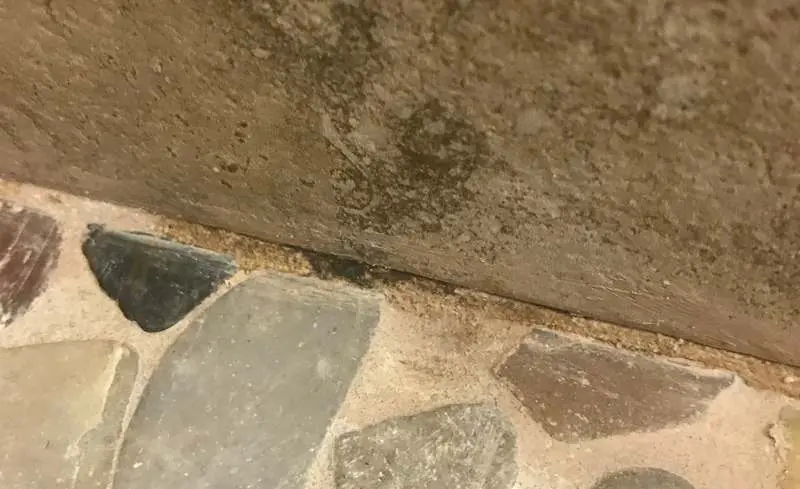
Aye, this is probable mold growth. However, the corporeality is not sufficient to impact the indoor air quality or your health. The porous nature of grout, stone and caulking allow water to penetrate the textile and in plow, lead to mold growth. There are a couple of techniques you can implement to help prevent this in the future. 1.) Utilise a waterproofing sealant. Your local tile contractor should be able to offering suggestions or perform the awarding. 2.) Run your bath fan for at least 1 hour after each usage. Your goal is to ensure the materials are completely dry. This can exist tricky if the shower is used multiple times per twenty-four hours.
How To Remove Mold From Stone Shower,
Source: https://www.environix.com/mold/learning/bathroom-mold/shower-mold/
Posted by: murrahexan1970.blogspot.com


0 Response to "How To Remove Mold From Stone Shower"
Post a Comment